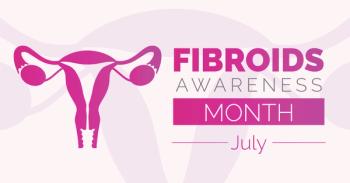
Detecting cervical pathology in women with uterine fibroids via colposcopy
A prospective study published in the International Scientific Research Journal has found that colposcopy was able to detect exoservicitis in about one-third of women with uterine fibroids.
The study, which was conducted in Uzbekistan, assessed the position of the cervix and the tactics of cervical pathology in 100 women who either underwent total hysterectomy or did not undergo surgery. Exoservicitis is inflammation of the cervix and the mucous membrane of the cervical canal.
Group 1 comprised the first 70 cases, all of which were uterine fibroids treated surgically, whereas group 2 represented the final 30 cases of uterine fibroids managed under the supervision of a dispensary. There was also a control group of 25 patients who had no pathology in the uterine body.
Colposcopy allows for the epithelial fundus of the bund to be magnified 15-fold.
Colposcopic examination revealed exoservicitis in 31.4% of patients in Group 1, 33.3% of patients in Group 2 and 32% of patients in the control group.
After treatment with a 3% solution of acetic acid, a red rash based on hyperemia and edema appeared, but the rashes were not smooth and dense after performing a Schiller test.
“The namoen of cervicitis was caused by edema that was visible to the eye around the cervical canal, where hyperemia and yellowish fluid separated,” wrote the authors.
The colcoscopic type of exoservitis, which was detected in combination with ectopic elements, was found in 2.8% of patients in Group 1 and in 3.3% of patients in Group 2.
There was also noticeable hyperemia and swelling of the external mucous membrane of the cervix, plus a state of increased secretion of glands.
In 1 case, researchers found an invisible rash.
Ectopia of the transformation zone was observed during colposcopic examination in 1.4% of patients in Group 2, compared to 6.6% of patients in Group 1 and 5% of patients in the control group.
Overall, 67% of patients in Groups 1 and 2 exhibited diseases referenced as cervical erosion.
Although etiotropic treatment is advised for cervical erosion—opposed to destructive therapy—many of the study patients were treated with various destructive methods without additional examination and without an accurate diagnosis.
Extended colposcopy concluded that in certain cases, fakatgina accurately correlated with the colposcopic properties of the cervix, which are characteristic of patients with fibroids.
Various pathological changes reflecting abnormal colposcopic zone of atypical transformation, iodonegative zones, leukoplakia or smooth warts were also detected in some patients.
The authors noted that pathological cervical jaundice has been poorly researched in patients with gynecological diseases; more specifically, a lack of characteristics and frequency of cervical diseases that occur in combination with the pathology of the reproductive system.
There are no clear indications for differentiated treatment of gynecological pathology, according to the authors. Despite the cervix being an organ that needs hormones and for which pathological changes indicate a commonality of specific pathogenetics based on development, the cervix is in an autonomous state from an anatomical and functional nuances perspective.
Reference
Fazliddinovna MG, Uygunovich NA, Faxriddinovna ND. The modern way of diagnosis of cervical pathology in women with uterine fibroids via the colposcopy. Int J Sci Res. 2022. Volume 3, Issue 2. https://wos.academiascience.org/index.php/wos/article/view/958/889
Newsletter
Get the latest clinical updates, case studies, and expert commentary in obstetric and gynecologic care. Sign up now to stay informed.











